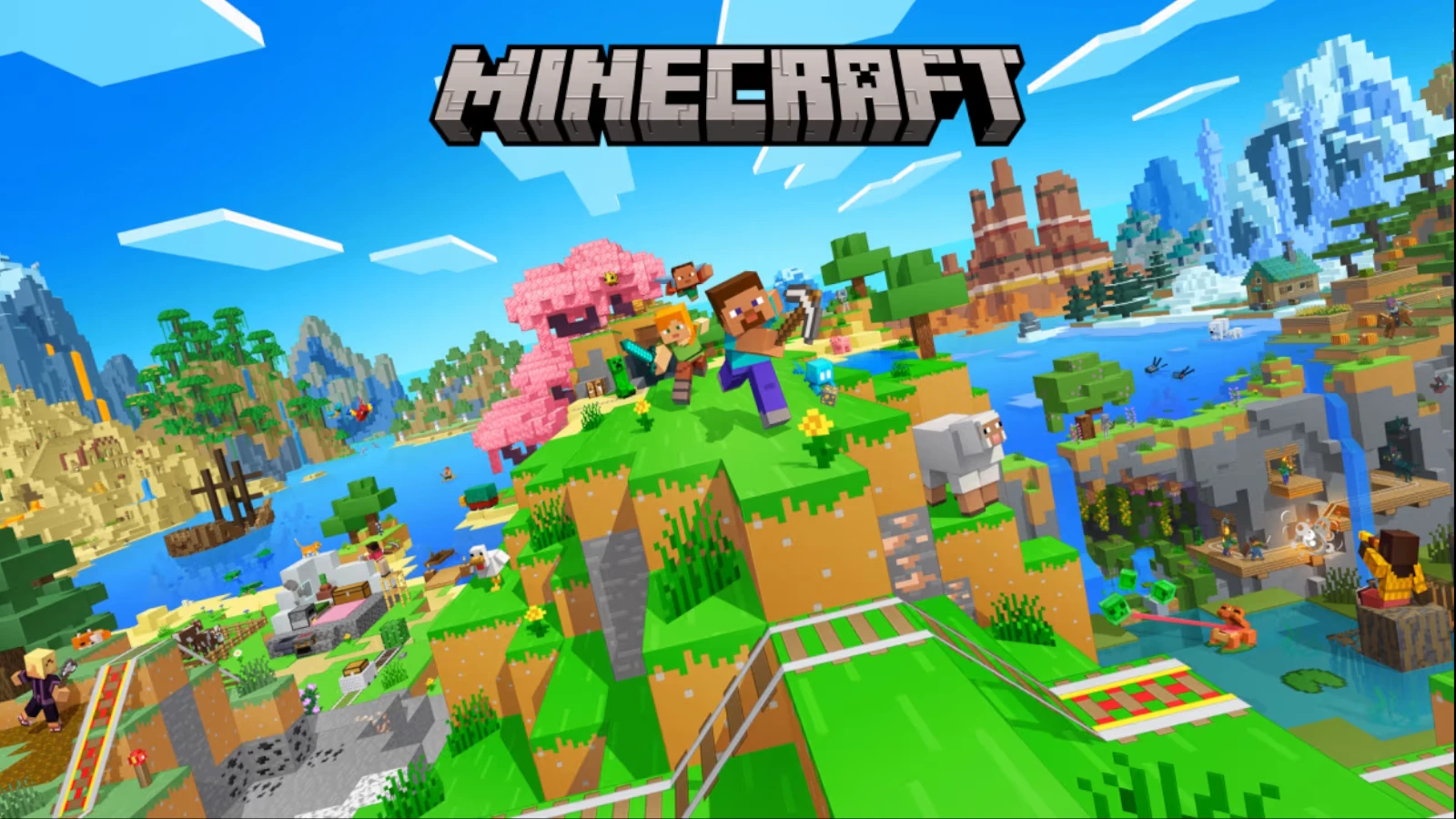
To get the best performance in Minecraft, you need to adjust in-game settings, optimize your hardware, and manage your system resources. This guide gives recommendations to help you get the most frames per second (FPS) and have a smoother gaming experience. Minecraft is loved for its creative possibilities, but performance is crucial for a good experience. High FPS can make the game run smoother, leading to better gameplay. Adjusting game settings is a direct way to improve FPS.
Optimizing video settings, such as render distance, graphics, and resolution, can help match the game to your hardware and boost FPS, reducing lag and giving you a better Minecraft experience. You can also boost performance by updating device drivers, managing computer processes, and modifying specific details in the game’s program settings.
Unleash the Frames: Optimizing Your Minecraft Settings for Maximum FPS
Want buttery-smooth gameplay in Minecraft? Getting the best possible frames per second (FPS) is key. Higher FPS means smoother motion and a more responsive experience. Here’s how to tweak your Minecraft settings to boost your FPS and enjoy the game to its fullest.
Graphics Settings
- Graphics: Set this to “Fast.” This disables fancy visual effects and focuses on performance.
- Render Distance: Lower this to 8-12 chunks. This reduces the number of chunks loaded at once, easing the burden on your system.
- Smooth Lighting: Turn this off. It’s a nice effect, but it can be demanding on your hardware.
- Shadows: Disable shadows or set them to “Minimal.” Shadows can significantly impact performance.
- Clouds: Turn off clouds or set them to “Fast.” Clouds can be surprisingly resource-intensive.
- Particles: Reduce particles to “Minimal” or “Decreased.” This reduces the number of visual effects like smoke and sparks.
- Entity Shadows: Turn this off. It only affects the shadows cast by entities (mobs and players) and has a noticeable impact on performance.
- Mipmap Levels: Set this to 0 or 1. Mipmapping improves texture quality at a distance, but it can also reduce FPS.
Performance Settings
- Max Framerate: Set this to “Unlimited” or a value that matches your monitor’s refresh rate. This allows your system to render as many frames as possible.
- VSync: Turn this off. VSync can reduce screen tearing, but it can also introduce input lag and limit your FPS.
- Use VBOs: Make sure this is on. VBOs (Vertex Buffer Objects) can improve performance.
- Entity Distance: Reduce this to 50% or 75%. This affects how far away entities are rendered.
Other Optimizations
- Java Arguments: If you’re comfortable with it, you can allocate more RAM to Minecraft in the Java arguments. This can help with performance, especially if you have a lot of mods installed.
- Optifine: Consider installing Optifine. This is a popular mod that optimizes Minecraft’s performance and adds many useful features.
- Close unnecessary programs: Close any programs you’re not using while playing Minecraft. This frees up system resources for the game.
- Update your drivers: Make sure your graphics drivers are up to date. This can often improve performance in games.
| Setting | Recommended Value |
| Graphics | Fast |
| Render Distance | 8-12 chunks |
| Smooth Lighting | Off |
| Shadows | Off or Minimal |
| Clouds | Off or Fast |
| Particles | Minimal or Decreased |
| Entity Shadows | Off |
| Mipmap Levels | 0 or 1 |
| Max Framerate | Unlimited or match monitor refresh rate |
| VSync | Off |
| Use VBOs | On |
| Entity Distance | 50% or 75% |
Optimizing Minecraft Settings for Maximum Performance
Video Settings
| Setting | Recommended Value | Explanation |
|---|---|---|
| Graphics | Fast | This reduces the graphical complexity of the game, improving performance. |
| Smooth Lighting | OFF | Turning off smooth lighting can provide a significant FPS boost on lower-end systems. |
| Render Distance | 8-12 Chunks | Adjust this based on your system’s capabilities. Lower values improve performance, but the world will load in as you move around. |
| Max Framerate | Unlimited or VSync OFF | Setting this to unlimited removes the FPS cap, potentially increasing your FPS. However, VSync can help prevent screen tearing on some monitors. |
| View Bobbing | OFF | Turning this off can slightly improve performance and reduce motion sickness for some players. |
| GUI Scale | Small | A smaller GUI can improve visibility and performance. |
| Brightness | 50% | Adjust this to your preference. Brightness does not significantly affect performance. |
| Clouds | OFF | Clouds can be demanding on lower-end systems. |
| Particles | Minimal | Reducing particle effects can improve performance. |
| Entity Shadows | OFF | Entity shadows can impact performance, especially in areas with many entities. |
| Mipmap Levels | 0 | This setting helps to smooth out textures in the distance, but can also affect performance. |
| Use VBOs | ON | Vertex Buffer Objects can improve performance, but may cause issues on some systems. |
| Anisotropic Filtering | OFF | This setting can improve the appearance of textures, but at the cost of performance. |
Other Optimizations
- Java Arguments: Allocate more RAM to Minecraft through JVM arguments in your launcher settings.
- Mods and Shaders: While some mods can enhance visuals, they often come at the cost of performance. Consider using optimization mods like Optifine or Sodium.
- Hardware Acceleration: Make sure your graphics drivers are up-to-date and hardware acceleration is enabled.
- Close Background Applications: Running other programs simultaneously can consume resources and affect Minecraft’s performance.
Key Takeaways
- Adjusting Minecraft’s video settings can significantly improve FPS and performance.
- Options like reducing render distance and turning off high-demand visual effects can enhance game speed.
- Advanced adjustments beyond in-game settings may provide additional FPS improvements.
Optimizing Minecraft Video Settings for Increased FPS
Fine-tuning Minecraft video settings can significantly boost your game’s performance. By adjusting various graphics options and utilizing enhancements, you can achieve higher frames per second (FPS) for a smoother gaming experience.
Adjusting Graphics Settings
The frame rate, often referred to as frames or FPS, is crucial to a seamless gameplay experience in Minecraft. Begin by accessing the Video Settings from the game menu and make the following changes for optimal performance:
- Graphics: Set this to Fast to lower the quality of visual effects.
- Smooth Lighting: Switching this off can lead to a notable FPS increase.
- Render Distance: Reduce this to improve game speed as your machine will process fewer blocks.
- Particles: Set to Minimal to reduce the number of particle effects like smoke.
- Clouds: Turning clouds off avoids rendering these moving textures and saves resources.
- Mipmap Levels: Lower levels can improve FPS by simplifying textures at a distance.
Through these adjustments, players can significantly enhance their gameplay smoothness.
Leveraging Mod Enhancements
Mods like Optifine, Sodium, and other optimization mods can sharpen performance. These mods offer additional video setting options and better optimization over the default settings:
- Optifine: Introduces settings like dynamic lighting, custom sky textures, and increased control over particle effects.
- Sodium: Improves FPS by optimizing how Minecraft renders everything, making game play more efficient on your machine.
Each mod comes with its own set of features to experiment with for FPS gains. Explore their settings to see what works best for your hardware configuration.
Managing Game Resolution and Fullscreen Mode
Resolution impacts how many pixels your game displays and can influence FPS. Lower resolutions generally improve performance as the game has fewer pixels to render:
- Set Game Resolution lower if you are experiencing lag.
- Toggle between Fullscreen and Windowed Mode to see which offers better performance on your system.
Additionally, adjusting the GUI scale can also affect your frames, so find a balance that retains visibility while not overwhelming your system.
Understanding the Impact of RAM and CPU
Minecraft relies heavily on your computer’s RAM and CPU:
- Assign more RAM to Minecraft if your system allows it to handle the game’s requirements better.
- Ensure no background processes are using up valuable CPU resources, which should be reserved for running the game.
Hardware upgrades like adding more RAM or updating your CPU can also result in a smoother experience if your machine meets the minimum system requirements but still struggles with performance.
Advanced Performance Optimization Techniques
When adjusting your Minecraft settings for better performance, it’s important to look beyond the game itself. Your operating system, background processes, machine and network settings can have a significant impact on gameplay smoothness.
Operating System and Background Processes
Running Minecraft, especially the Java edition, requires sufficient system resources. Close unnecessary background applications before launching the game to free up memory. You can manage active processes through the task manager on your operating system. Prioritize Minecraft to allocate more resources to it, enhancing overall performance.
Optimizing Machine and Network Settings
For a smoother gaming experience, connect your machine to the internet using an Ethernet cable rather than Wi-Fi to reduce latency. Adjust your machine’s power settings for high performance, especially when plugged in. In the Java edition, set minimum and maximum processor states to 100% to maintain steady performance.
Game-Specific Adjustments and Mods
Within Minecraft, reduce the mipmap levels and disable biome smoothing for an FPS boost. Lower simulation distance to ease workload on your system. Use optimization mods designed for performance enhancement; these mods can streamline how Minecraft runs and interacts with your device. In multiplayer scenarios, a stable network and adjusted settings can improve your interaction with the game world, leading to a more enjoyable experience.
By following these steps diligently, you can optimize Minecraft’s settings and your system’s configuration to ensure a more fluent and responsive gaming experience.
Frequently Asked Questions
Adjusting the right settings can boost frames-per-second (FPS) to make Minecraft smoother. Here’s what to do for different devices and game versions.
What settings should I adjust to maximize FPS in Minecraft on a high-end PC?
For a high-end PC, start by lowering graphics to fast, decrease render distance, and turn off smooth lighting and fancy graphics. Enable VSync and consider reducing the maximum frame rates to stabilize your gameplay.
How can I improve my FPS in Minecraft Bedrock Edition?
In Bedrock Edition, reduce graphics features such as render distance, particle effects, and anti-aliasing. Turning off ‘Fancy Graphics’ or reducing the ‘Simulation Distance’ can help too.
What are the best settings for increasing FPS on Minecraft for Xbox?
For Xbox, reducing the ‘Render Distance’ and disabling ‘Fancy Leaves’ can help. Ensure ‘Smooth Lighting’ is set to minimum or turned off to increase FPS.
Can applying FPS boost mods in Minecraft significantly improve game performance?
Yes, FPS boost mods like Optifine can significantly enhance game performance. They allow more customization of visual settings and can optimize Minecraft’s performance.
What steps can I take to resolve lag issues in Minecraft 1.19 and later versions?
To resolve lag, decrease render distance, switch graphics from Fancy to Fast, and ensure your Java version is up to date. Close any unnecessary background applications to free up system resources.
What configuration options should I change to optimize Minecraft for a low-end PC?
For a low-end PC, set graphics to Fast, lower the render distance, and disable smooth lighting and cloud rendering. Turn off ‘View Bobbing’ and reduce the ‘GUI Scale’ to improve your frame rates.

